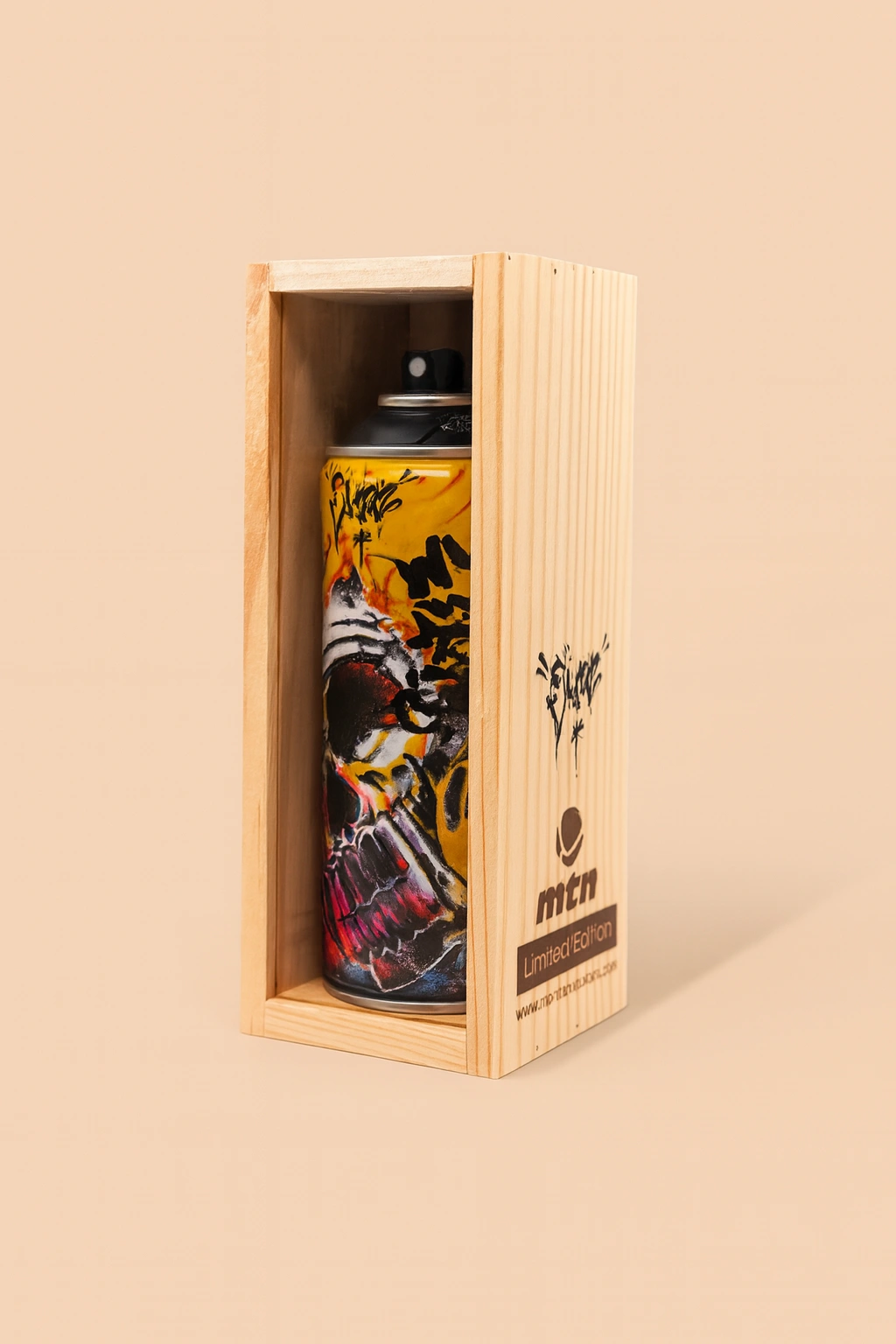Within the turbulent landscape of contemporary British painting, Carol McDermott stands as a fearless voice—one who doesn’t merely observe the human condition, but invites it onto the canvas in all its ragged, radiant truth. Her acrylic work, “Looney Magnet – Waifs and Strays,” is a visceral, layered exploration of emotional magnetism, vulnerability, and the blurred boundaries between caretaking and chaos.
Painted on canvas with an unapologetically raw palette and emotionally charged composition, McDermott’s piece examines the magnetic allure of the wounded and wandering, casting her protagonist not as a savior, but as a human lightning rod—drawn to the broken, or perhaps breaking beneath them.
From a distance, “Looney Magnet – Waifs and Strays” is loud, chaotic, perhaps even unkempt. But upon closer inspection, its brushwork and symbolism whisper something more tender: a meditation on empathy, mental fragmentation, and the push-pull dynamics of emotional caregiving. Set within McDermott’s wider practice in the United Kingdom, this painting feels both specific to her cultural milieu and universally resonant.
Artist Overview: Carol McDermott’s Unvarnished Truths
Based in the United Kingdom, Carol McDermott is part of a growing wave of female painters whose work navigates themes of identity, instability, and the beauty found at the margins of society. Her paintings are often characterized by:
- Expressive use of acrylics, favoring bold color blocks and intentionally distorted figures
- Narrative abstraction, where clarity and confusion coexist within the same frame
- Deep psychological insight, expressed through facial expressions, compositional imbalance, and gesture
McDermott’s subjects—more often than not—are the forgotten, the overlooked, or the emotionally raw. Her canvases do not aim to resolve trauma but to inhabit it. They welcome frayed edges, fractured logic, and conflicted affection. Her artistic lens is both maternal and manic, refracting life’s messiness through a deeply humane filter.
“Looney Magnet – Waifs and Strays” is no exception. It is, perhaps, her most powerful articulation of that psychic duality.
Composition and Color: Where Madness and Love Collide
At first glance, the painting is a riot of color. Acrylic paints, layered in thick strokes and frantic gestures, create a chaotic energy that’s almost musical. Jagged forms jut out from the center. Lines are both rushed and deliberate. There’s no neatness here—only a curated recklessness that mirrors the subject matter.
The central figure—presumably the “magnet” of the title—is visually defined but emotionally elusive. Their body language speaks of tension: arms that reach and recoil, eyes that alternate between alertness and exhaustion. Surrounding this figure are multiple presences—ghostlike or animalistic—representing the “waifs and strays.” Some are childlike, others feral. They hover, cling, intrude. They are drawn to the magnet, as the title promises, but at what cost?
Color plays a vital role in evoking psychological tone:
- Red and orange bursts dominate the central field, suggesting volatility and intensity
- Blues and greys lap at the edges like shadows, evoking melancholy, grief, or detachment
- Flesh tones, though stylized, anchor the human reality in this emotional theatre
What emerges is a deeply immersive environment—more emotional than spatial, more inner world than outer landscape.
Themes: Empathy, Exhaustion, and the Unchosen Role
The painting’s title, “Looney Magnet – Waifs and Strays,” is both literal and layered. It conjures the image of someone who, by design or fate, attracts the wounded, those cast out by society, family, or stability. But the title also flirts with self-description: is the magnet “looney” because of who they attract—or because of the toll this attraction takes?
In this way, the painting examines the complex dance of the empath, especially those who become emotional repositories for others without asking. The magnet does not rescue the waifs and strays. They absorb them, endure them, sometimes at their own expense.
There is tenderness here—but also burden. The painting doesn’t romanticize compassion. It shows it in its most draining, disruptive form. And in doing so, it asks uncomfortable questions:
- What does it mean to love people who are hard to love?
- When does care become co-dependence?
- Can the magnet ever rest, or are they always attracting new chaos?
- Is the magnet a saint—or someone teetering on the edge of breakdown themselves?
These are not questions the painting answers. They are questions it insists we sit with.
Cultural Context: The UK, Mental Health, and the Outsider
In the context of contemporary British painting, “Looney Magnet – Waifs and Strays” arrives at a time of growing discourse around mental health, social exclusion, and domestic emotional labor. In particular, post-pandemic Britain has seen a renewed examination of:
- Caregiver burnout, especially among women and mothers
- Homelessness and state neglect, often leaving individuals to fend for or adopt others on the fringes
- Neurodivergent empathy, where highly sensitive individuals magnetize those in emotional pain
McDermott’s painting can be read as both personal and political. It may reference individual experience, but it also resonates with broader social dynamics. The waifs and strays aren’t just children or animals. They’re people who fall through the cracks—and the magnet is every person who reaches out and finds themselves sinking too.
There’s also a distinctly feminine subtext to the work. The magnet figure may not be explicitly gendered, but the emotional labor it performs—silent, enduring, unpaid—is a role many women recognize instinctively.
Technique and Texture: Acrylics with Emotional Weight
The use of acrylic paint gives McDermott’s work a fast-drying urgency, allowing her to layer quickly and think emotionally rather than technically. The textures in this painting—at times raised, at times flat—echo the variability of psychic space.
- Dry brush effects create scratchy lines that mimic both raw nerves and whispered secrets
- Bold palette knife applications create jagged, sculptural textures, amplifying the sensation of abrasion or crowding
- Drips and splatters may symbolize loss of control, the breakdown of boundaries
There is no attempt to hide the hand of the artist. Brushstrokes are visible, violent, vulnerable. You feel the speed. You feel the frustration. And sometimes, the softness that breaks through.
Comparative Work: Echoes and Distinctions
“Looney Magnet – Waifs and Strays” finds kinship with works by artists like:
- Tracey Emin, for its diaristic intensity and emotional exposure
- Francis Bacon, for its anatomical distortion and psychic pain
- Paula Rego, for its focus on gender, domestic narrative, and psychological surrealism
Yet McDermott’s work also distinguishes itself. While others may abstract the figure beyond recognition, she keeps the human visible—even if they are blurred, misshapen, or fragmenting. This choice insists that, no matter how chaotic life becomes, the individual endures.
Emotional Impression
To stand before this painting is to feel emotionally implicated. You may recognize yourself in the magnet—giving too much, always saying yes. Or you may recognize yourself in the waifs—needy, hurt, seeking shelter.
Carol McDermott’s “Looney Magnet – Waifs and Strays” is a striking achievement in narrative painting. It captures not only a moment but a dynamic, a recurring human pattern of emotional magnetism and sacrifice.
No comments yet.








